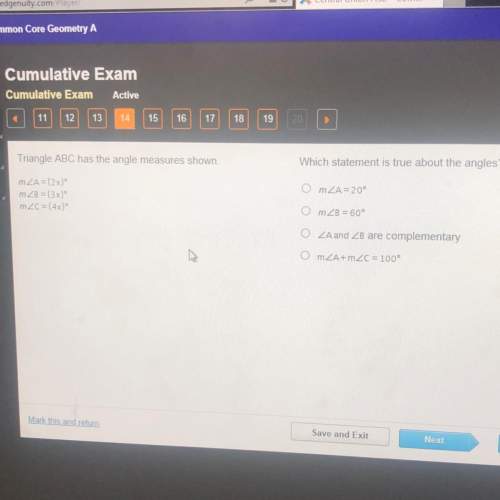
Mathematics, 03.05.2021 17:10 hendo617
) Quadrilateral ABCD has vertices A(-1,0), B(3,3), C(6,-1), and D(2,-4). Prove that quadrilateral ABCD is a square.

Answers: 3


Other questions on the subject: Mathematics

Mathematics, 21.06.2019 13:50, braisly6605
From the figure and statement provided, select the proper to prove statement. through a point outside a line one line can be drawn parallel to the line. mn= ab ab + bc= ac mis parallel to ! ab=bc als parallel to b
Answers: 1

Mathematics, 21.06.2019 20:00, zgueyeu
The two cylinders are similar. if the ratio of their surface areas is 9/1.44 find the volume of each cylinder. round your answer to the nearest hundredth. a. small cylinder: 152.00 m3 large cylinder: 950.02 m3 b. small cylinder: 972.14 m3 large cylinder: 12,924.24 m3 c. small cylinder: 851.22 m3 large cylinder: 13,300.25 m3 d. small cylinder: 682.95 m3 large cylinder: 13,539.68 m3
Answers: 2

Mathematics, 21.06.2019 23:00, brittneyrenae7338
What is the value of x in the equation7x+2y=48 when y=3
Answers: 2

Mathematics, 22.06.2019 01:00, stjuliendeja
What is the value of the discriminant, b2 ? 4ac, for the quadratic equation 0 = x2 ? 4x + 5, and what does it mean about the number of real solutions the equation has?
Answers: 3
You know the right answer?
) Quadrilateral ABCD has vertices A(-1,0), B(3,3), C(6,-1), and D(2,-4). Prove that quadrilateral AB...
Questions in other subjects:


English, 06.06.2020 07:59





Computers and Technology, 06.06.2020 07:59


Mathematics, 06.06.2020 07:59




